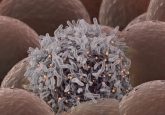TAILORx: the largest ever adjuvant breast cancer treatment trial – the story so far and what’s next

What is TAILORx?
The Trial Assigning IndividuaLized Options for Treatment (Rx), or TAILORx, is the largest adjuvant breast cancer treatment trial ever conducted, and enrolled 10,273 women with early-stage breast cancer across approximately 1200 sites in the United States and five additional countries.
The primary objective of TAILORx is to more precisely determine the effect of chemotherapy, if any, for women with node-negative, hormone receptor-positive disease and Oncotype DX Breast Recurrence Score® results of 11–25.
In 2015, results from the TAILORx secondary study group with Oncotype DX Breast Recurrence Score results less than 11 were published in The New England Journal of Medicine. More than 99% of the 1626 women who received hormonal therapy alone without chemotherapy were free of breast cancer distant recurrence after 5 years. These results provided the highest level of evidence (level 1A) supporting the clinical utility of Oncotype DX to identify early-stage breast cancer patients who can safely avoid chemotherapy treatment.
TAILORx is the largest adjuvant breast ca treatment trial ever conducted&enrolled. Over 10,000 pts across 1200 centers in US enrolled! All 5 adult ca research groups: @eaonc @NRGonc @SWOG @ALLIANCE_org @CDNCancerTrials enrolled patients! Great job! https://t.co/FDvxqtm65a #bcsm
— Sabin Motwani (@sabinbmotwanimd) March 22, 2018
A brief overview of developments so far
In April NICE issued a revised Diagnostics Consultation Document (DCD) on genomic tests such as the Oncotype DX Breast Recurrence Score test, recommending it for continued use to guide adjuvant chemotherapy decisions for people with hormone receptor positive, HER2 negative, node-negative early breast cancer. This decision by NICE followed a large response to the earlier consultation from the clinical community and other stakeholders, with respondents resoundingly advocating for continued access to Oncotype DX testing for NHS patients.
In a few days, NICE will close its consultation, which some stakeholders believe is too soon as it means the TAILORx data will not be included in their decision.
“Genomic Health encourages NICE to wait for the presentation of ground-breaking TAILORx results and incorporate its results. The inclusion of TAILORx will ensure that the final guidance is informed by this landmark study and that physicians and patients can benefit from the latest and strongest evidence that is provided by the gold standard in research – large prospective randomised clinical trials,” a Genomic Health spokeperson stated.
Simon Holt, surgical oncologist and Head of Department at The Prince Philip Hospital Breast Care Unit and Consultant Surgeon to Breast Test Wales Screening (UK) provides his reaction in this opinion piece:
Common sense and clinical evidence are falling by the wayside. The NICE is tying itself in knots over the crucial issue of using of genomic tests to guide chemotherapy decisions for breast cancer patients.
Tests of this kind are vital in targeting treatment effectively. Chemotherapy is only useful for a small minority of patients with early stage, ER+ invasive breast cancer. Historically however around half of patients received chemotherapy, meaning many women were over-treated, resulting in them needlessly experience the short and long term side-effects from the treatment.
By examining the DNA within tumors to identify the small number of patients whose disease can be halted by chemotherapy, we can spare large numbers from the physical and emotional toll of such aggressive therapy.
For the last 5 years, Oncotype DX has been recommended for use in the NHS to guide treatment decisions. But in a re-review in January, NICE’s first draft guidance advised against all use of genomic tests. A second draft executes a complete u-turn and suggests using three different tests – Oncotype DX, EndoPredict and Prosigna – without differentiating adequately between them.
Oncotype DX is the only one of the tests developed and validated to identify the patients likely to benefit from chemotherapy, as well as refine their prognosis. With a proven track record within the NHS, more than 18,000 UK patients having benefited from testing, with 99% of patients with a low-risk test result deciding to forego chemotherapy.
Critically, because of the difference in the way these tests function, both EndoPredict and Prosigna classify a much larger proportion of patients as high risk, meaning that many more would face needless chemotherapy. NICE’s own analysis reveals that both of these tests would lead to a greater proportion of women receiving chemotherapy than they did pre-genomic testing in 2013 – the opposite to the desired outcome, which is for improved selectivity.
NICE’s guidance is opaque, contradictory and unclear. One would need to read the 600-page documents in great depth to find any explanation of the important differences between these tests. Quite how this serves the interests of patients, or healthcare professionals, is a mystery.
Meanwhile, results of an eagerly anticipated major chemotherapy trial will be presented at ASCO in June. The landmark TAILORx trial is the largest ever adjuvant breast cancer treatment study, taking in 10,273 patients across six countries.
The trial will provide definitive new evidence about which patients with a mid-range Recurrence Score result benefit from chemotherapy, if any.
Given the apparent uncertainties on this issue from NICE to date it makes little sense for NICE to finalize the guidance without incorporating the biggest ever clinical trial in this field.
It would be in the interests of patients and clinicians alike for NICE to produce clearer guidance on genomic testing for breast cancer patients, and to take TAILORx’s findings on board.
What’s next?
Researchers have been informed that TAILORx has achieved sufficient information to render a conclusion regarding the effect of chemotherapy in early-stage breast cancer patients with Recurrence Score results of 11–25. The data from the TAILORx trial has been accepted for presentation at the Plenary Session at the 2018 ASCO Annual Meeting (1–5 June, 2018, IL, USA).
On March 15, @eaonc told @GenomicHealth that the TAILORx trial has matured enough to answer the primary question about chemo efficacy in Oncotype DX intermediate risk (11-25) early stage #breastcancer https://t.co/F6epyFtUrp
— Michael Fisch (@fischmd) March 21, 2018
#ASCO18 , Very proud to see our very own Dr. Joeseph Sparano presenting the TAILORx trial at the plenary! @MontefioreNYC @EinsteinMed https://t.co/ysNaDdUB53
— Aditi Shastri, MD (@aditishasMD) April 25, 2018





